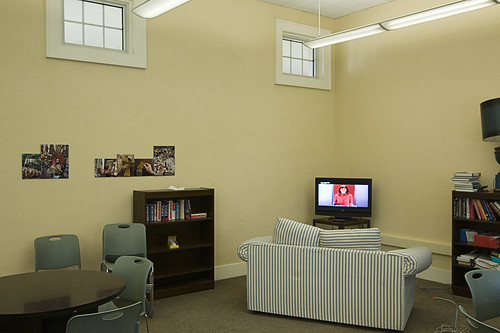Concerning that last function, I was pressed for time the other day and decided to write up and record a quick dictation for my beginning French class. The dictée was itself silly, nothing special, and you can hear it here:
I made my 37 second phone call, opened Google voice and embedded the message. Total work time was about a minute and 10 seconds. One thing weird was that, for several days, the transcription never appeared. I thought, "That's not surprising, I spoke in French, and Google voice doesn't speak French." (I should add, though, that it's English transcriptions are excellent.)
Lo and behold, the transcription turned out to be a translation--of sorts. The line breaks are mine, as I thought it flowed better, but no other changes were made to spelling, capitalization or punctuation.
"Hey, I love you and Jeff A. Victor"
A Collaborative Work by Me and Google








